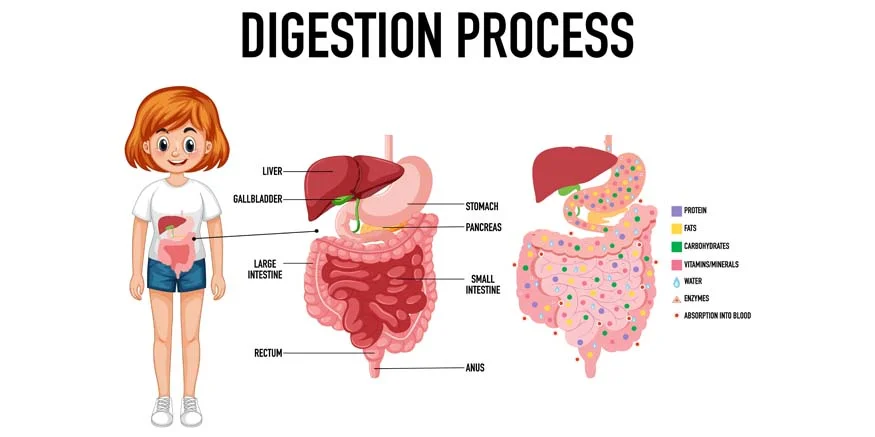As a child, I often wondered how my food was digested and where my energy came from. Why did I feel weak when I didn’t eat or drink enough?
The answer lies in the fascinating journey food takes through our digestive system—a long, twisting tube where food is broken down, sorted, and processed before being circulated around the body to nourish cells and provide energy.
How Digestion Begins: Mouth to Stomach
Digestion starts in the mouth, where chewing and saliva begin breaking down food. From there, food travels down the esophagus to the stomach, where it is further broken down into small particles, making it easier to pass through the small and large intestines. This complex process enables our bodies to absorb and use nutrients efficiently.
Role of the Digestive System in Energy Production
The digestive system breaks down the food we eat into essential nutrients, vitamins, and minerals. Carbohydrates, proteins, and fats are converted into simpler forms like sugars, amino acids, and fatty acids, which are absorbed by the body. The pancreas produces pancreatic juice, rich in enzymes that aid in protein digestion, while the liver produces bile, which helps convert fats into usable energy.
Components and Phases of the Digestive System
Our digestive system is composed of the gastrointestinal (GI) tract along with accessory organs like the liver and pancreas. Digestion happens in three stages: the cephalic phase, where digestion starts as we think about or smell food; the gastric phase, when food reaches the stomach; and the intestinal phase, where nutrients are absorbed.
Also Read: List Of Nutrient-Rich Foods for Vitality: Eating For Energy
Absorption and Waste Formation
Once the food is broken down into its simplest forms, it is absorbed into the bloodstream via the small intestine, which extracts nutrients like carbohydrates, salts, and minerals. The large intestine plays a role in absorbing water and electrolytes while forming waste from the remaining indigestible parts of food.
Fun Facts About the Digestive System:
- It takes just 7 milliseconds for food to travel from your mouth to your stomach via the esophagus.
- The digestive system is about 30 feet long, stretching from mouth to anus.
- The stomach is J-shaped.
- A child’s digestive system works much faster than an adult’s, especially in infants aged 0–9 months.
In simple terms, our digestive system is like a machine that takes the food we eat and turns it into energy for our bodies. The process starts in our mouth when we chew food, and it mixes with saliva. Then, the food goes down a tube called the esophagus to our stomach, where it’s broken down into smaller pieces.
From there, the food moves into the intestines. This is where the body absorbs all the good stuff like nutrients and vitamins from the food. These nutrients are what give us energy and help us grow. Whatever the body can’t use becomes waste, which is later removed when we go to the bathroom.
In short, our digestive system takes the food we eat, breaks it down, uses the nutrients for energy, and gets rid of what we don’t need









